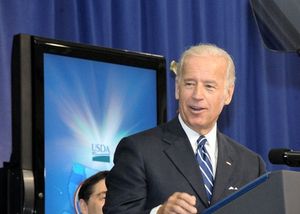Congressional Budget Office Baseline Estimate May Spell Challenges for Farm Bill
 The Congressional Budget Office’s (CBO) release of the baseline for the 2023 farm bill revealed that the Biden administration’s re-evaluation the Thrifty Food Plan may create some problems. This plan, which plays a role in determining Supplemental Nutrition Assistance Program (SNAP) benefits, will more than likely lead to an increase in SNAP benefits. But CBO says the SNAP outlays are projected to fall by $21 billion in 2023 to $127 billion because pandemic-related benefits will end, but those benefits will be substantially higher in future years than in 2020, when the cost was $79 billion.
The Congressional Budget Office’s (CBO) release of the baseline for the 2023 farm bill revealed that the Biden administration’s re-evaluation the Thrifty Food Plan may create some problems. This plan, which plays a role in determining Supplemental Nutrition Assistance Program (SNAP) benefits, will more than likely lead to an increase in SNAP benefits. But CBO says the SNAP outlays are projected to fall by $21 billion in 2023 to $127 billion because pandemic-related benefits will end, but those benefits will be substantially higher in future years than in 2020, when the cost was $79 billion.
The Government Accountability Office (GAO) issued a report in December that said USDA “made this update without key project management and quality assurance practices in place.” The CBO forecasts for USDA’s two main commodity programs — Price Loss Coverage (PLC) and Agricultural Risk Coverage (ARC) — are forecast through 2025 to each pay out few payments. PLC is forecast to cost $32.1 billion from FY 2023-33 while ARC-County is forecast at $16.2 billion over that time.
CBO estimates the bulk of those payments will not begin until 2026, suggesting either changes in policy or declines in commodity prices. CBO also projects a roughly $2 billion-per-year increase in costs for crop insurance over the next decade as well, amounting to $23 billion over ten years. CBO also forecasts crop insurance-insured acreage will top 510 million acres for FY 2023 and will eventually rise to cover 549 million acres.
CBO continues that “baseline budget projections are intended to show what would happen to federal spending, revenues, deficits, and debt if current laws governing spending and taxes generally remained the same. Changes to laws — particularly those affecting fiscal policies — could lead to budgetary outcomes that diverged considerably from those in the baseline.”
